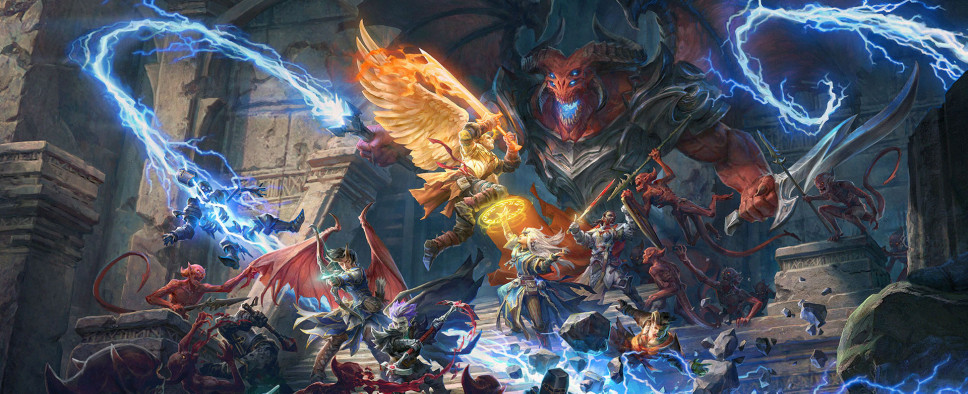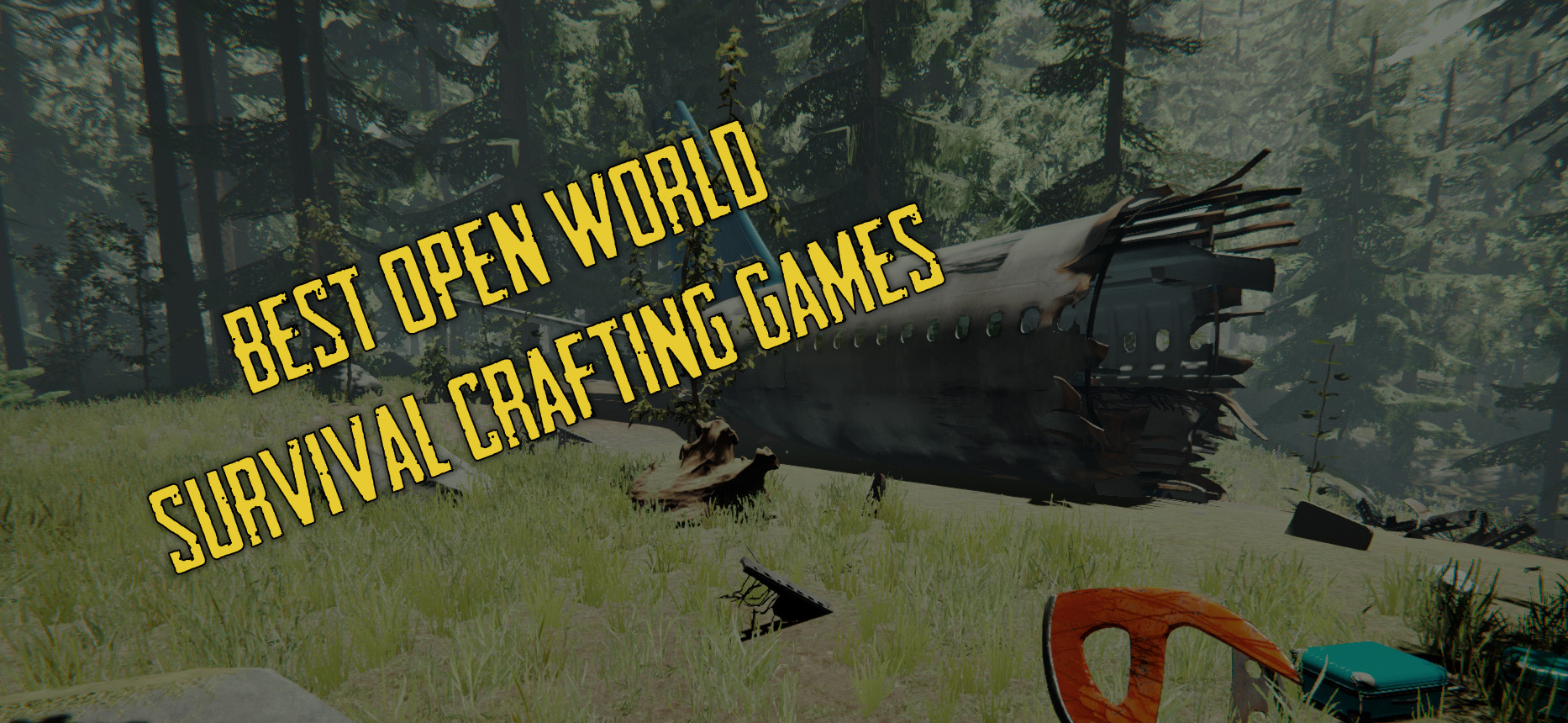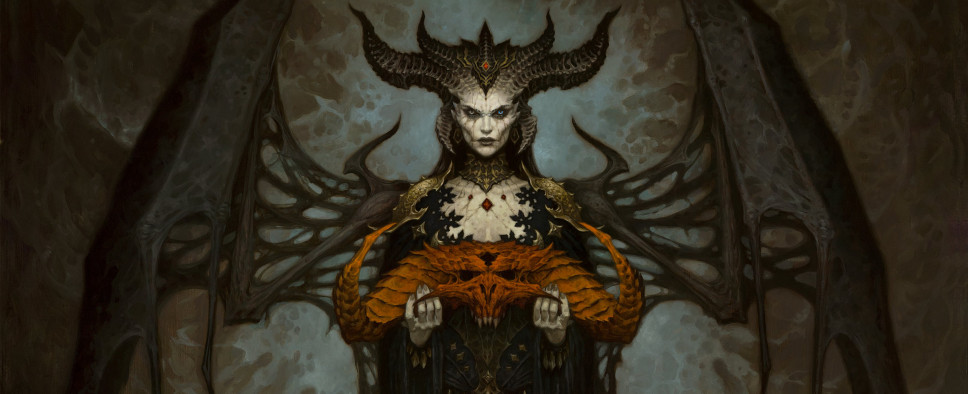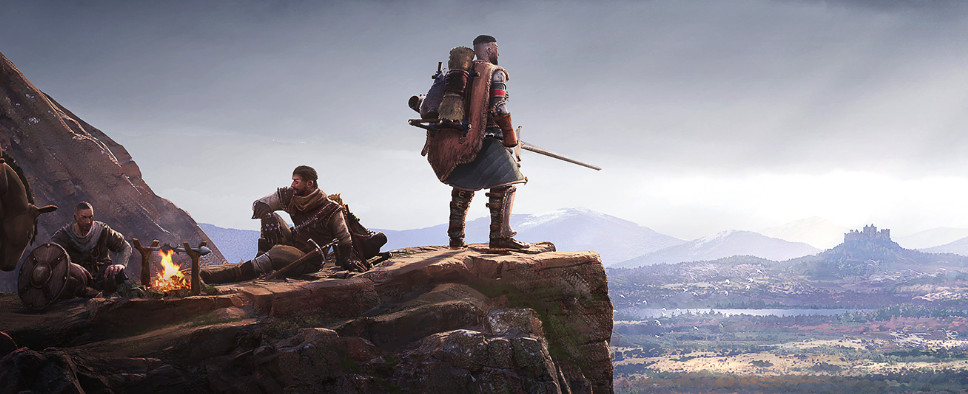When you play a CRPG, the level designers play the part of your dungeon masters, throwing monsters and traps at you, giving quests, and rewarding you with treasure. Your companions, on the other hand, take the place of your real-life party members—except they mostly do as you say, and never touch your rulebooks with pizza-stained fingers. So how do we create these characters who are going to accompany you throughout almost the entire game?
We begin by asking ourselves three questions.
Question 1: What Do We Already Have?
Since the game is based on an existing Adventure Path, we start off with a treasure trove of characters to work with. We carefully comb through the source material, looking for characters to expand on as either NPCs or playable companions. Some characters are obviously crucial to the plot: you can’t have Wrath of the Righteous without the demon lord Deskari or Queen Galfrey. Some have whole pages dedicated to them either in the AP itself, like Sosiel the cleric of Shelyn and Arueshalae the redeemed succubus, or elsewhere, like Seelah the iconic paladin. Some, however, might play a small role in the AP, but have so much potential that it would be a crime to let them go to waste. That’s how Jubilost, who was just a minor encounter in the Kingmaker AP, joined the player’s party in the CRPG, and that’s why Lann the mongrel archer will join your crusade in Wrath of the Righteous.
Question 2: What Do We Need?
Unless you’re doing a “six dwarven barbarian sisters walkthrough” challenge, you probably want some variety in your party. That’s why we need to create both a versatile pool of characters you can use to win battles, and an ensemble of memorable personalities who can add something to your main character’s story no matter who you play. Tanks and controllers, healers and killers, cheerful and grumpy, kind and cruel, love interests and hate bait… We put everything—races, classes, genders, alignments, backgrounds, personality types—in one big chart and tweak it until we’re sure we have enough variety to cover all our needs, both mechanically and story-wise.
Question 3: What Do We Want?
Every character is curated by one of the narrative designers. Every member of the story team gets a golden ticket to put a companion of their own into the game—not just develop one of the concepts the team came up with while meditating over the chart from question 2, but give life to their own special brainchild.
Crusaders, Assemble!
Of course, every character, even that precious brainchild, needs to somehow fit into the table, so concessions need to be made. Once we have our roster, we go through a meticulous process of putting together every piece of the puzzle until we know exactly how every party member fits into the big picture. Sometimes we need to sacrifice really cool ideas in the name of playability. Sometimes, on the other hand, mechanical needs dictate the plot, giving the character some details their creator never even thought of.
For example, Ember was initially envisioned as a child crusader, a barefoot preacher whose blessed innocence would allow her to lead whole armies. That sounds like a divine spellcaster, right? A cleric, or, maybe, an oracle with low Intelligence and high Charisma. Except we already had characters of both those classes. In fact, the only slot in the chart she could fit into was the witch. Yes, the Intelligence-based arcane spellcaster. We checked the source books for class archetypes, and, indeed, found a Charisma-based witch archetype, called… seducer—not the best fit for this character. So our mechanics designers came up with a new archetype we called the stigmatized witch—Charisma-based, and bearing a curse borrowed from the oracle (Ember, of course, got Blackened to reflect her burn marks). We need to run mechanical changes like this past Paizo, which sometimes takes time—thankfully, they loved the concept. Meanwhile, the narrative designers changed her personality and backstory to reflect the mechanics, and got a living paradox—an atheist preacher of Good itself, disillusioned with deities, and preaching love and kindness in the face of despair. As a result, we got a more original and nuanced character than the devout follower of some deity we were thinking of originally—and we need to thank our cold, formal chart for this development.
Anatomy of a Hero
In game design, nothing ever goes exactly as it was planned in the beginning. Sometimes this leads us to happy accidents and cool discoveries that allow us to expand our vision in unforeseen directions. Sometimes, unfortunately, it means we need to give up some parts of that vision in order to save the whole, and deliver a game with complete features, not a sprawling mess of never-quite-finished ones. Some parts of the original AP never make it into the CRPG, some storylines get cut, some plot points become footnotes.
But how much does it really take to create a companion? Let’s see. First come the design documents. The character’s appearance, voice, backstory, personality, place within the party, opinions on the events of the story, relationships with the player character and the other party members… These documents are the roots that the players won’t see, but they are necessary to produce the actual text that appears in the game. This includes the character’s personal dialogue (changing over time as the story progresses), calls they make in the battle, and other interface text. Then comes their questline (which includes additional NPCs and events) and possibly a romance. Finally, there are their interactions with the player (the interjections they make during dialogues with NPCs) and the other companions (campfire banter and their responses to others’ interjections). This is one of the most expensive parts, because with every added companion, the amount of interaction grows in geometric progression. All in all, a companion costs at least 2.5–3 months of a narrative designer’s work time. And that’s only the writing—that doesn’t include the inevitable edits, and approvals, and the work done by other teams.
If You Love Them, Let Them Go
A writer can be very possessive of their precious brainchildren, but the reality of developing a videogame is that it’s a massive group effort. You need to be good at your job, but you also need to trust others to be good at theirs. It’s scary, sometimes frustrating, sometimes absolutely thrilling to see a character you’ve created grow in the loving hands of others. Narrative designers describe the character’s appearance and speech, but it’s up to the artists and the sound director to give them an actual face and a voice. The character’s story is revealed over the course of writing their personal quest—and then rediscovered when a level designer tells you that no, this Really Cool Thing you wrote won’t work in the game, but there’s a Different Cool Thing you had no idea existed. Even within the narrative team, we need to trust each other to be able to write every character’s voice. Sometimes you read some banter or a dialogue cue another team member wrote for your character and it makes you want to pull your hair out. Sometimes you read it and realize it’s way better than what you would have come up with. In any case, what’s done is done. Eventually, we hit the release date and let them out into the world to finally meet you!
To arms!
Owlcats





